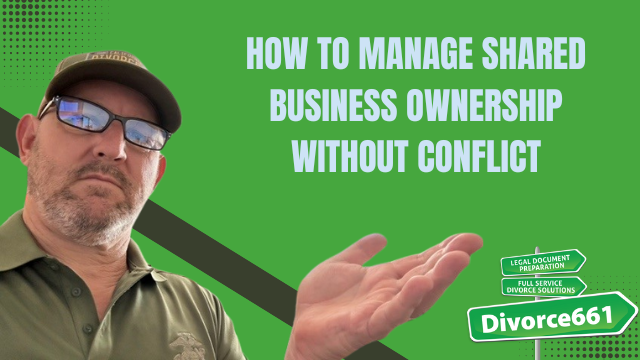🤝 What Happens to Shared Business Partnerships After Divorce? | Los Angeles Divorce Insights
Navigating a divorce is never easy, but when you and your spouse co-own a business, the process becomes even more complex. In California, understanding how your business is treated during a divorce is crucial to protecting your financial future and ensuring a smooth transition. Drawing on expert advice from Tim Blankenship at Divorce661, this guide breaks down your options and offers practical steps to manage shared business interests during divorce.
Understanding Business Ownership in California Divorce
In California, businesses that are started or operated during the marriage are typically classified as community property. This means both spouses generally have equal ownership rights, regardless of whose name is on the business license or bank account. Recognizing this legal framework is the first step toward making informed decisions about your shared business.
Three Main Paths to Resolve Shared Business Ownership
When divorcing couples co-own a business, there are three primary options to consider:
- One Spouse Buys Out the Other: One partner purchases the other’s share, often through structured payments.
- Continue Co-Owning the Business: Both parties agree to remain joint owners and operate the business together post-divorce.
- Sell the Business and Split the Profits: The business is sold, and proceeds are divided according to the divorce settlement.
Each of these options requires clear, enforceable agreements and often a professional valuation to determine the business’s fair market value.
Why Clear Agreements and Professional Valuations Matter
Without precise terms and documentation, business disputes can escalate, increasing stress and financial risk. A professional valuation ensures that both parties understand the worth of the business, creating a fair basis for negotiations.
For example, one couple running an online store chose the buyout route. One spouse agreed to buy out the other with payments spread over 12 months. This arrangement was formally incorporated into their divorce judgment, making it enforceable and reducing potential conflicts.
Protecting Your Financial Interests Through Expert Guidance
At Divorce661, we specialize in coordinating business valuations and drafting tailored buyout or co-ownership agreements that protect your interests. Our approach focuses on:
- Ensuring fair and accurate business valuations
- Creating clear, legally binding agreements
- Safeguarding your financial future both during and after divorce
By securing a solid agreement, you can protect your assets and gain peace of mind during what is often a challenging time.
Making the Right Choice for Your Unique Situation
Choosing the best path depends on your personal circumstances and future goals. Consider what aligns best with your financial aspirations and lifestyle, whether that’s maintaining ownership, receiving a buyout, or selling the business altogether.
Remember, every divorce and business partnership is unique. Consulting with professionals who understand the nuances of California divorce law and business valuation can make a significant difference.
Get Help to Split Smart and Secure Your Future
If you co-own a business with your spouse and are facing divorce, don’t navigate this complex process alone. Visit Divorce661.com for a free consultation. Our experienced team will help you explore your options and craft a smart split that protects your financial well-being.
Let’s work together to ensure your business interests are handled with care and expertise, giving you the confidence to move forward.




